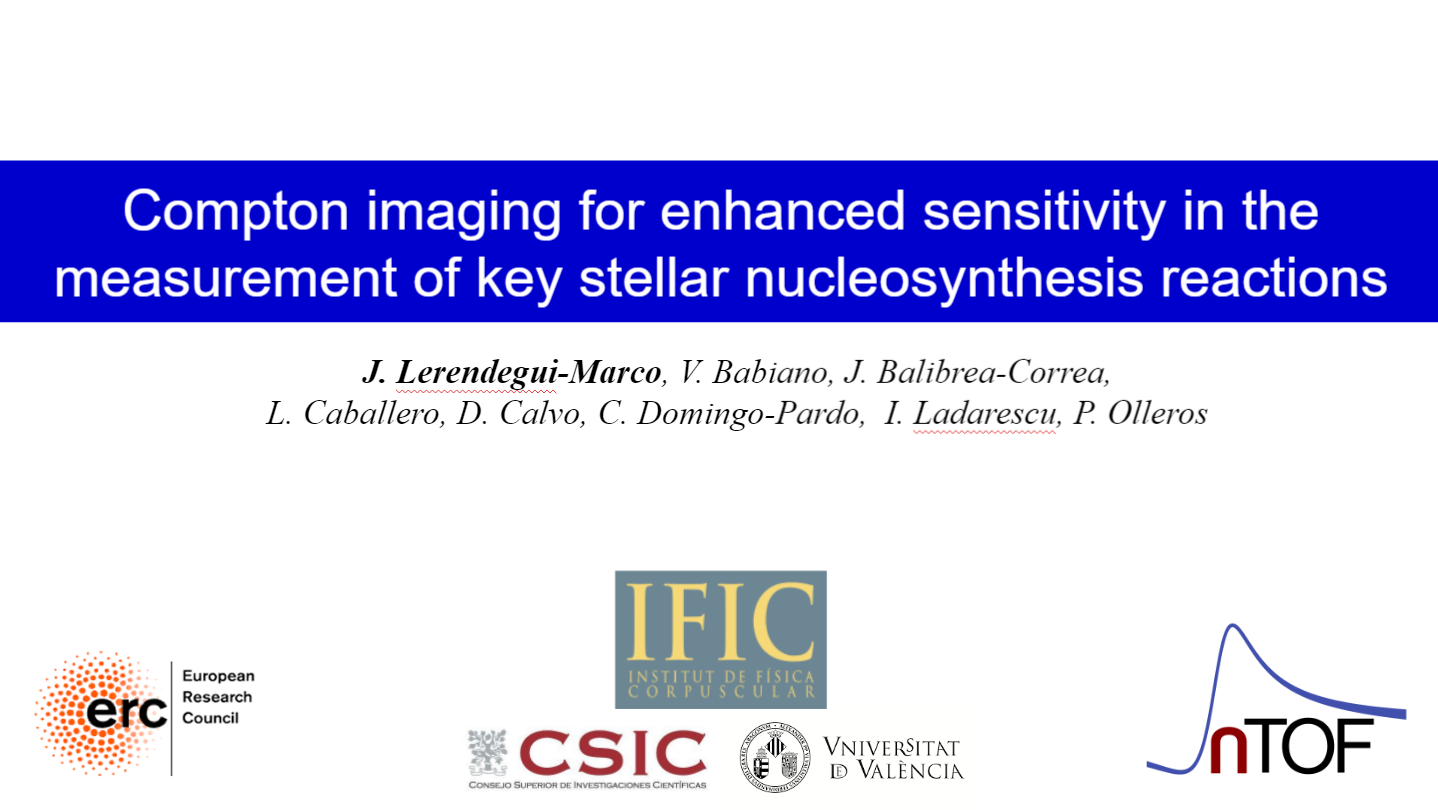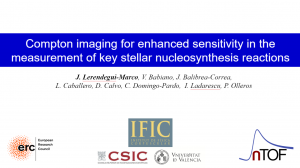News
IFIC Experimental Seminar: Compton Imaging for enhanced sensitivity in the measurement of key stellar nucleosynthesis reactions, by Jorge Lerendegui Marco, July 5th, 2021
IFIC Experimental Seminar: Compton Imaging for enhanced sensitivity in the measurement of key stellar nucleosynthesis reactions, by Jorge Lerendegui Marco, July 5th, 2021
- Abtract:
see https://indico.ific.uv.es/event/6310/
Neutron capture cross-section measurements are fundamental in the study of astrophysical phenomena, such as the slow neutron capture (s-) process of nucleosynthesis operating in red-giant stars. The best suited method to measure neutron capture (n,γ) cross sections over the full stellar range of interest is the time-of-flight (TOF) technique. However, an important limitation in previous TOF experiments arises from neutrons that are scattered in the sample and get subsequently captured around the experimental setup. i-TED is an innovative detection system developed at IFIC within the HYMNS-ERC project which exploits the Compton imaging technique with the aim of obtaining information about the incoming direction of the detected γ-rays. The imaging capability allows one to reduce the dominant source of background, hence enhancing the (n,γ) detection sensitivity. This talk will introduce the i-TED concept, describe its experimental implementation and provide an overview of the recent developments of the project. Finally, an outlook will be given on our plans to used this novel setup in key astrophysical measurements, such as the s-process branching-point reaction 79Se(n,γ).

